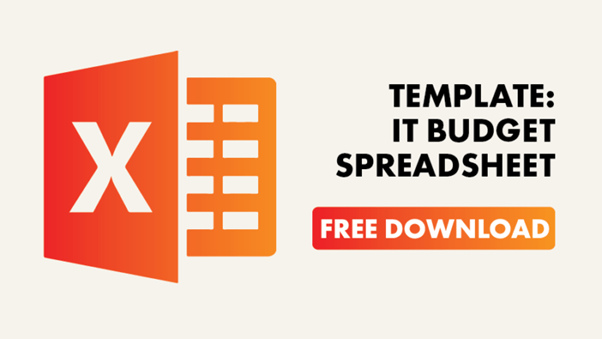How to create an IT budget: 8 tips for planning ahead


In this article, Jamie Hissit (head of vCIO at Air IT) shares his top tips on how to create an IT budget, for managers and business owners who want the best possible value from their spending.
1. Look to the past to plan the future
A good starting point if you want to create an IT budget is to look back at those from previous years so you have a baseline from which to work. This will give you an idea of how revenue and outgoings vary across months, quarters and years. It can then be adjusted according to predicted changes and new priorities.
2. Establish your priorities
If you’re an IT manager, you’ll know first-hand which parts of your IT strategy are working well, and what can be improved to streamline processes. However, it’s always helpful to gather everyone’s opinions, from end users to team leaders.
This is equally, if not more, important for business owners or those responsible for transformation – you can adjust your strategy according to end users’ priorities and bugbears. After all, these are the people that will be benefitting from the budget items you are considering proposing, and their support will help you gain approval for

Jamie Hissit
your budget.
If you’re not sure where to start when it comes to reviewing your IT systems and processes, you may benefit from a professional IT audit.
3. Align with company goals
IT is a mission-critical element in the everyday operations of pretty much all businesses. Your yearly IT budget is a great opportunity to encourage digital transformation in order to get ahead of the competition, whilst showing key stakeholders that you have the long-term success of the company front of mind.
One of the ways you can do this is through advanced data analytics, also known as business intelligence. By integrating all your business reporting together in one platform with the ability to cross-reference multiple data sources, business intelligence solutions such as Microsoft Power BI can free up time spent creating manual reports, giving you an accurate, live view of business performance. Not only can this improve productivity, but it can also help you identify opportunities and areas of improvement which is beneficial for directors who want to meet goals and grow the business.
4. Identify ongoing expenses
One of the first things to consider when creating an IT budget is any recurring costs, such as:
- Staff (inhouse, outsourced or both)
- Network infrastructure and security (data centre, backups, firewalls, VPN, cyber security, support and maintenance contracts)
- Replacing or upgrading hardware and software (PCs, laptops, servers)
- Subscriptions and cloud services (productivity software e.g. Microsoft 365, data storage, video conferencing)
- Line of business applications (CRM, ERP, finance, marketing and HR systems)
- Telecoms (voice, mobile, internet, data)
- Peripherals (printing spend, keyboards, mouse, headsets, cables etc.)
5. Establish any project expenses
Do you have any big projects coming up such as a significant installation, an office move or a recruitment drive? Is the company undergoing a period of digital transformation?
If so, you will need to think about any setup costs, licences, training, additional hardware, increased need for IT support, and how much time it will take up.
6. Keep security in mind
Some of the main causes of data breaches are:
- Criminal hacking – where cybercriminals use stolen credentials, purchased on the dark web or guessed using a password-generating machine, to access an organisation’s system
- Human error – where employees make an innocent mistake such as accidentally sending sensitive information to the wrong person, or leaving it online without any password restrictions
- Social engineering – where fraudsters pose as a colleague, supplier or director of the company and contact their victims with what looks like a legitimate request for money or financial details
With so many breaches caused by employees that are unaware of cyber security best practices, your IT budget proposal must address how they are going to be protected from cybercrime. Otherwise, all the time and money spent on your IT systems could be rendered useless.
7. Don’t cut corners to cut costs
When it comes to IT budget planning, it can be tempting to reduce costs by delaying or cancelling things like training courses that seem like more of a ‘want’ than a ‘need’.
However, it’s not worth risking the problems this could cause you later down the road. As demonstrated above, skipping things like user awareness training may seem like a quick fix but can ultimately cost your business more money in the end.
8. Use data to make decisions
When you present your IT budget proposal, you need to be able to show your reasoning behind each decision and demonstrate the benefits it will bring. This is why data comes in handy when preparing an IT budget.
For example, you are keen to introduce a new hosted telephony system that will save money on business communications. You can gather data on the effectiveness of your current system and what it is costing you, as well as requesting statistics from your supplier regarding the benefits of moving to the new system – from reduced travel expenses, to seamlessly integrating remote workers with the rest of the team.
Outsourcing IT services can help you manage your budget
Whether you require fully managed IT or some extra help at times of peak demand, Air IT can provide a solution that’s tailored specifically to you. Our fixed monthly fees include 24/7 proactive monitoring and maintenance of your network as well as remote and onsite IT support, so you can rest assured that there will be no unexpected costs and you won’t need to worry about how to create an IT budget.
Download our FREE IT Budgeting Template
We’ve created an IT budgeting spreadsheet template and outlined the solutions that your business should be considering in order to succeed through technology, to help take away the headache for IT leaders and financial teams.
If you’d like to find out more about our services, please don’t hesitate to get in touch.










